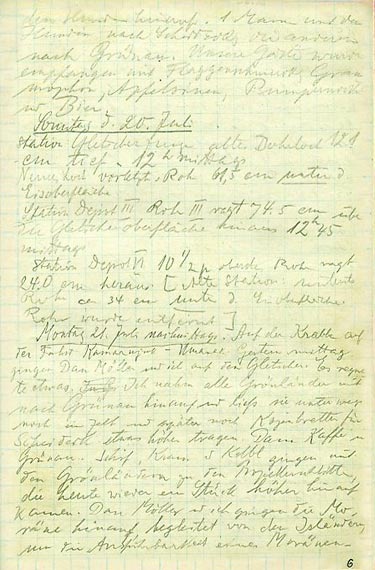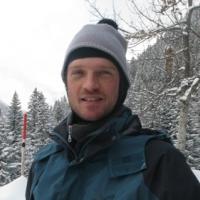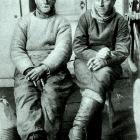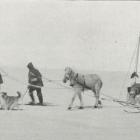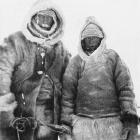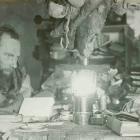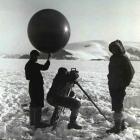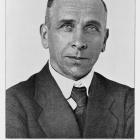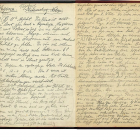The German Greenland Expedition 1930–1931
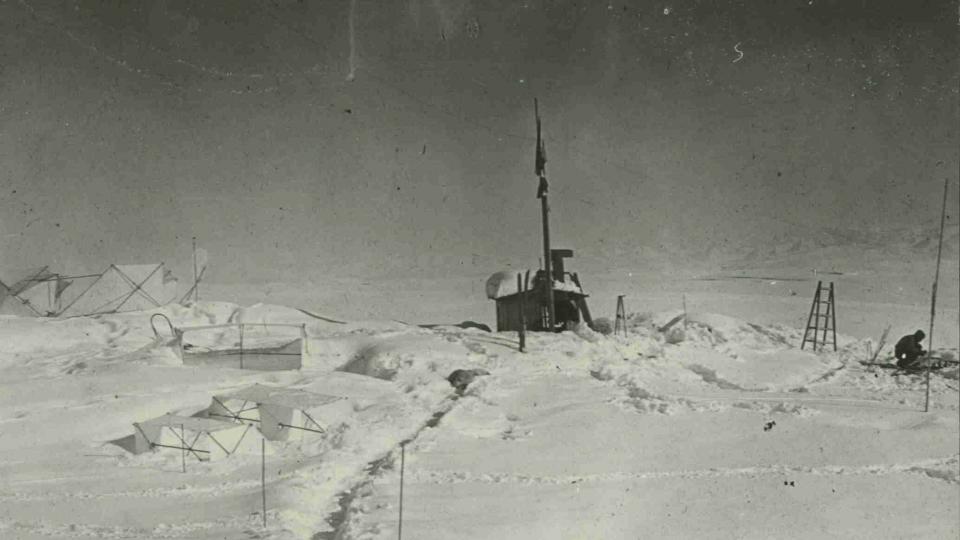
View of the Eastern Station in spring 1930. Unknown photographer.
View of the Eastern Station in spring 1930. Unknown photographer.
Courtesy of Alfred-Wegener-Institut für Polar- und Meeresforschung (AWI). Signatur NL 4 F Nr. 18.
 This work is licensed under a Creative Commons Public Domain Mark 1.0 License.
This work is licensed under a Creative Commons Public Domain Mark 1.0 License.
Alfred Wegener designated the expedition’s most important goal as the establishment of three stations across the ice sheet from west to east at 71° N. The purpose was to measure climate conditions and meteorological and glaciological data over the course of an entire year, thereby enabling a survey on the dynamics of ice sheets, snow increase—or loss—and weather conditions for the first time ever. Wegener applied seismological methods to examine the thickness of the ice sheet and the geological structure of the earth surface underneath the ice. With the help of small explosions on the ice and the registration of the sound waves that travel through the ice, it was possible to measure the structure of the Greenland ice sheet for the first time. This seismological method was developed at the physics institute of the University of Göttingen by the geophysicist Emil Wiechert. It was used to investigate basic geological questions about the structure of the earth and was also successfully applied in the field of geological prospecting.
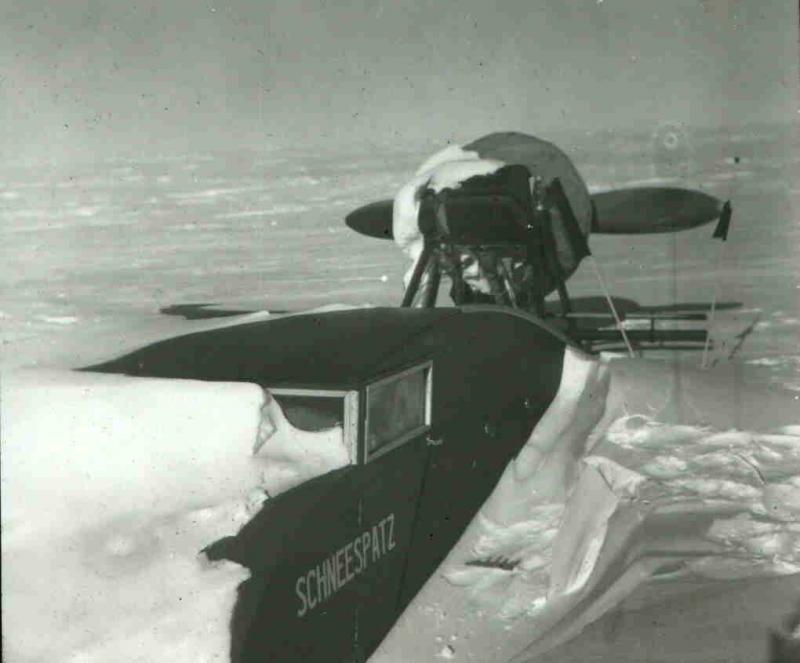
Propeller sled Schneespatz. Photograph by Franz Kebl, 1930.
Propeller sled Schneespatz. Photograph by Franz Kebl, 1930.
© 1930 Franz Kebl. Courtesy of the Alfred-Wegener-Institut für Polar- und Meeresforschung (AWI). Signatur: NL 4 F Nr. 73.
Used by permission.
The copyright holder reserves, or holds for their own use, all the rights provided by copyright law, such as distribution, performance, and creation of derivative works.
An essential precondition for Wegener’s ambitious scientific program was the construction of an overwintering station in the center of the ice sheet, some four hundred kilometers from either coast. Thus logistical questions—including the transport of materials, instruments, and supplies—were of utmost importance. The expedition was, however, delayed for several weeks due to the fact that the sea ice had not melted, and the general difficulties of transporting materials across the ice sheet. Furthermore, it was not only very difficult to load the propeller sleds onto the ice, it was also a challenge using this untested new technology for the transport of equipment across the ice.
The detailed diary entries from August and September 1930 provide an impression of the drama and the difficulties that confronted Wegener. Propeller sleds occupied a key position, for they were the object of great expectations. On the one hand, Wegener was full of enthusiasm about the new possibility of transporting large loads across wide stretches without stopping. On the other, the failure of the propeller sleds seemed to reflect the failure of the mission in general. Due to the lack of logistical support Johannes Georgi (1888–1972), Fritz Loewe (1895–1974) and Ernst Sorge (1899–1946) passed the winter in difficult conditions in the station Eismitte. They dug a cave in the ground and pursued a restricted scientific program in their improvised ice cavern. Fritz Loewe’s frost-bitten toes had to be amputated with a pocket knife, and the team was forced to economize their food and petroleum consumption. Nevertheless their measurements, such as Ernst Sorge’s measurement of the density and temperature of several annual layers of firn, were still valuable.
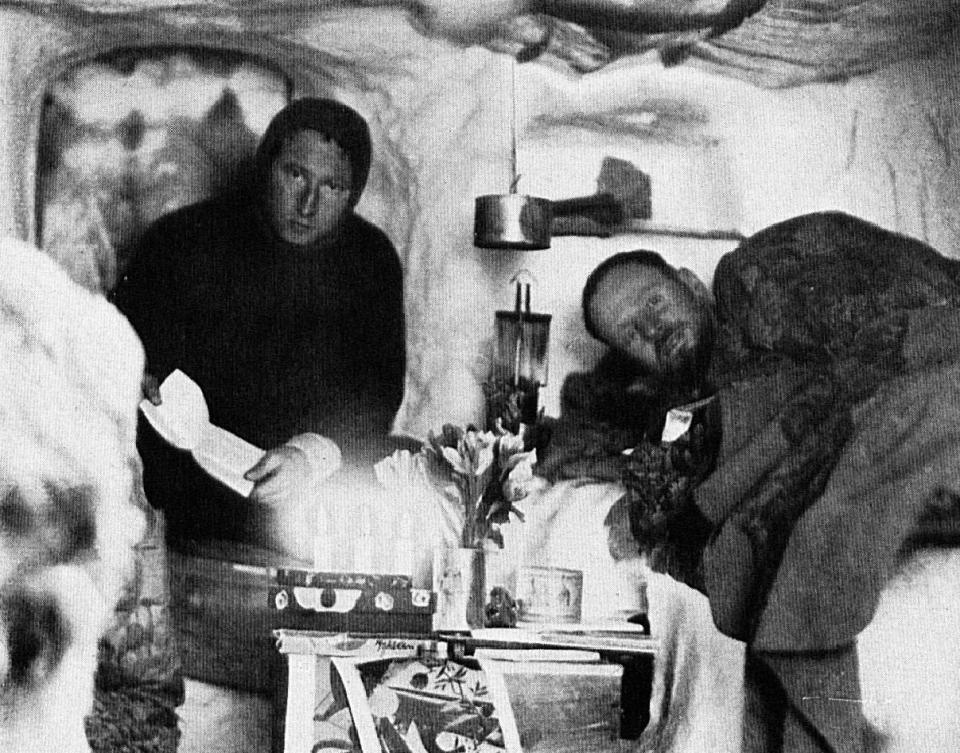
Christmas Eve in “Eismitte”: Johannes Georgi and Fritz Loewe. Photograph by Ernst Sorge, n.d.
Christmas Eve in “Eismitte”: Johannes Georgi and Fritz Loewe. Photograph by Ernst Sorge, n.d.
Signatur: NL 4 F Nr. 84. In Johannes Georgi, Im Eis vergraben: Erlebnisse auf Station „Eismitte“ der letzten Grönlandexpedition Alfred Wegeners, 5th ed. (Munich: Müller, 1938, 149).
 This work is licensed under a Creative Commons Public Domain Mark 1.0 License.
This work is licensed under a Creative Commons Public Domain Mark 1.0 License.
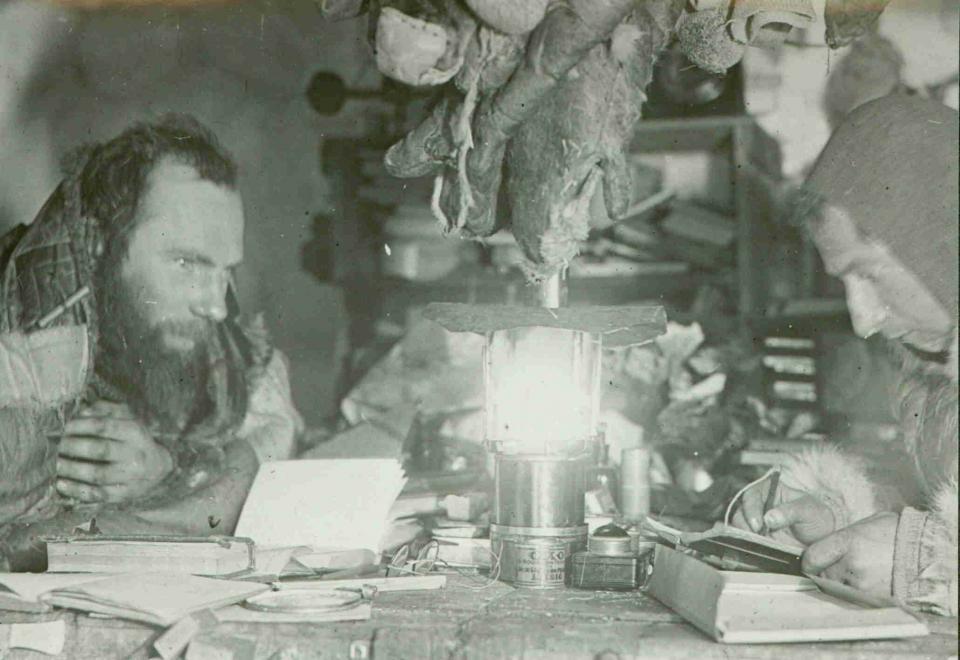
Ernst Sorge and Johannes Georgi, around 1930. Photograph by Fritz Loewe.
Ernst Sorge and Johannes Georgi, around 1930. Photograph by Fritz Loewe.
© 1930 Fritz Loewe. Courtesy of the Alfred-Wegener-Institut für Polar- und Meeresforschung (AWI). Signatur: NL 4 F Nr. 6.
Used by permission.
The copyright holder reserves, or holds for their own use, all the rights provided by copyright law, such as distribution, performance, and creation of derivative works.
Johannes Georgi (1888–1972) studied meteorology under Alfred Wegener in Marburg in 1915, and later worked for the Hamburger Seewarte just as Wegener did. Some of Wegener’s family members accused Georgi of causing the expedition leaders’ tragic death by sending an alarming letter that supposedly made Alfred Wegener decide to make the fatal journey to support the central firn station.
Fritz Loewe (1895–1974) emigrated from Germany during the Nazi regime. He first went to the Scott Polar Institute in Cambridge and later founded the first meteorological institute in Australia. After the Second World War he participated in several polar expeditions and maintained contact with German and international polar scientists. His papers are held at the University of Melbourne and the Deutsches Archiv für Polar und Meeresforschung.
Ernst Sorge (1899–1946) participated in the Wegner expedition as glaciologist. He measured the thickness of Greenland’s ice cap as 2600 m; this was later revised. Like Fritz Loewe, he served as a scientific advisor for the film SOS Iceberg by Arnold Fanck. In the Second World War he taught German soldiers survival techniques in ice and snow.
View selected pages from Wegener’s diaries [Deutsches Museum Archiv, NL 001] and their transcripts. For the complete original click here.
Essay:  2013 Christian Kehrt
2013 Christian Kehrt
Scanned diary: Used by permission of the Archives of the Deutsches Museum
Diary translation:  2013 Rachel Carson Center for Environment and Society
2013 Rachel Carson Center for Environment and Society
This refers only to the text and does not include any image rights. Please click on an image to view its individual rights status.
Source: Alfred Wegener, Tagebücher, April 1930–September 1930. Deutsches Museum Archiv, NL 001/014.
[006] Montag 21.Juli. nachmittags. Auf der Krabbe [Expeditionsschiff] auf der Fahrt Kamarujuk-Umanak gestern Mittag gingen Dan Möller und ich auf den Gletscher. Es regnete etwas. Ich nahm alle Grönländer mit nach Grünau hinauf, und ließ sie unterwegs noch im Zelt und später noch Kojenbretter für Scheideck etwas höher tragen. Dann Kaffee in Grünau. Schif, Kraus und Kelbl gingen mit den Grönländern zu den Propellerschlitten, die heute wieder ein Stück höher hinauf kamen. Dan Möller und ich gingen die Moräne hinauf, begleitet von den Isländern, um die Ausführbarkeit eines Moränen-
[006] Monday, 21 July, Afternoon [1930] Yesterday around noon, on the Kamarujuk-Umanak trip on the Krabbe [expedition boat], Dan Möller and I ventured onto the glacier. It was raining a little bit. I took all the Greenlanders with me up to Grünau, and on the way, I left them in the tent; later I had them carry wood planks for the berth at Scheideck a bit higher up. Then coffee in Grünau. Schif, Kraus, and Kebl went with the Greenlanders to the propeller sledges, which were again brought up a bit higher today. Dan Möller and I went up the moraine accompanied by the Icelanders, in order to test the feasibility
